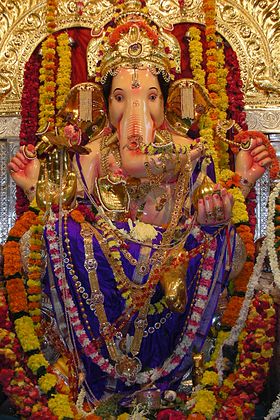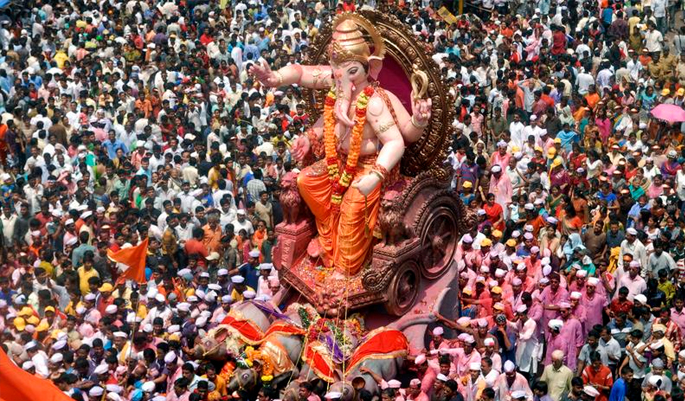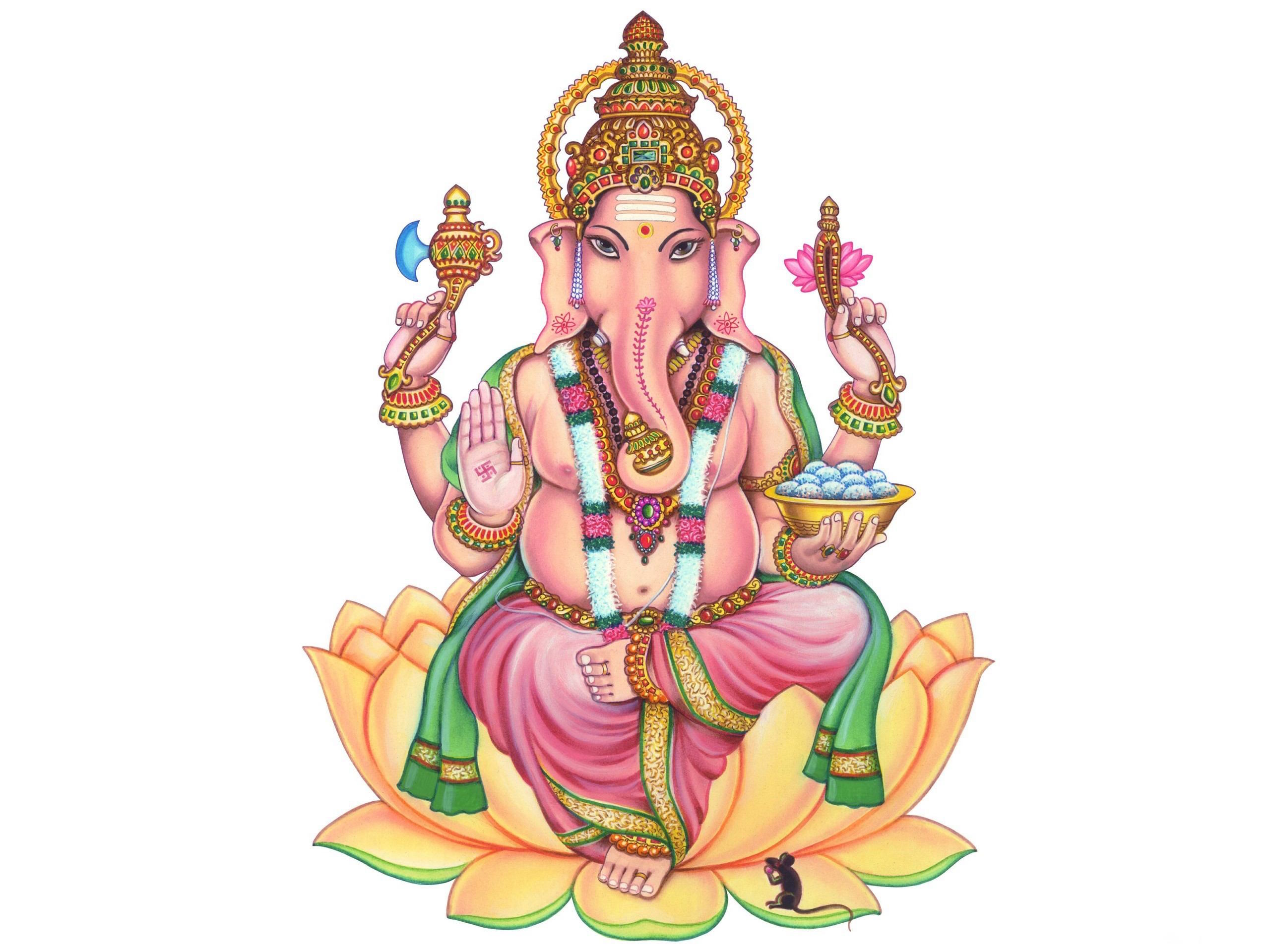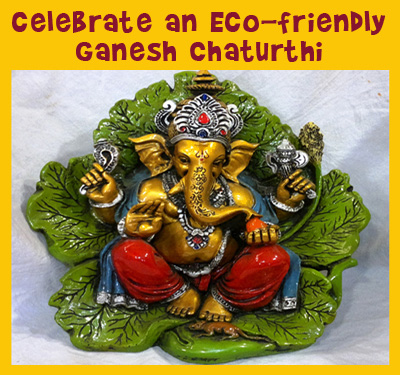This year Ganesh Chaturthi occurs on the 17th December 2015. This Hindu festival celebrates Ganesh’s birth, the God with elephant head, son of Shiva and Pârvatî. This celebration is also known under the name of Vinayaka Chaturthi or Vinayaka Chavithi according to the tongues.
The date of Ganesh Chaturthi celebration depends on the lunar cycle. Though the ceremony of Shiva’s birth always happens during the month of Badhra (or Bashrapad) in the Hindu calendar. This year it begins on Thursday, September 17th and will continue for some days. The festival of Anant Chaturdashi puts an end to the celebrations. This ceremony takes place all over the world. In 1893, this festival became a ceremony of public interest thanks to Lokmanya Tilak. He wanted to bring closer brahman casts and non brahmans people around that so popular god, who became a symbol of Maharastra nationalism.
Ganesh Chaturthi consists in a series of rituals. After a bath to purify the believers, they buy idols of their god, according to the tradition a statue made of clay. In cities big statues decorated with flowers and garlands sit enthroned in sanctuaries or small houses made for the occasion. The idol is worshiped every day. Once the god invoked, Pharisee bring every kinds of gifts for their god. Many different ways to celebrate Ganesh Chaturthi exist because it is also celebrated in households of Ganesh devotees. It always ends with dissolution of idols in the water. This last ritual symbolises the final step of creation cycle.
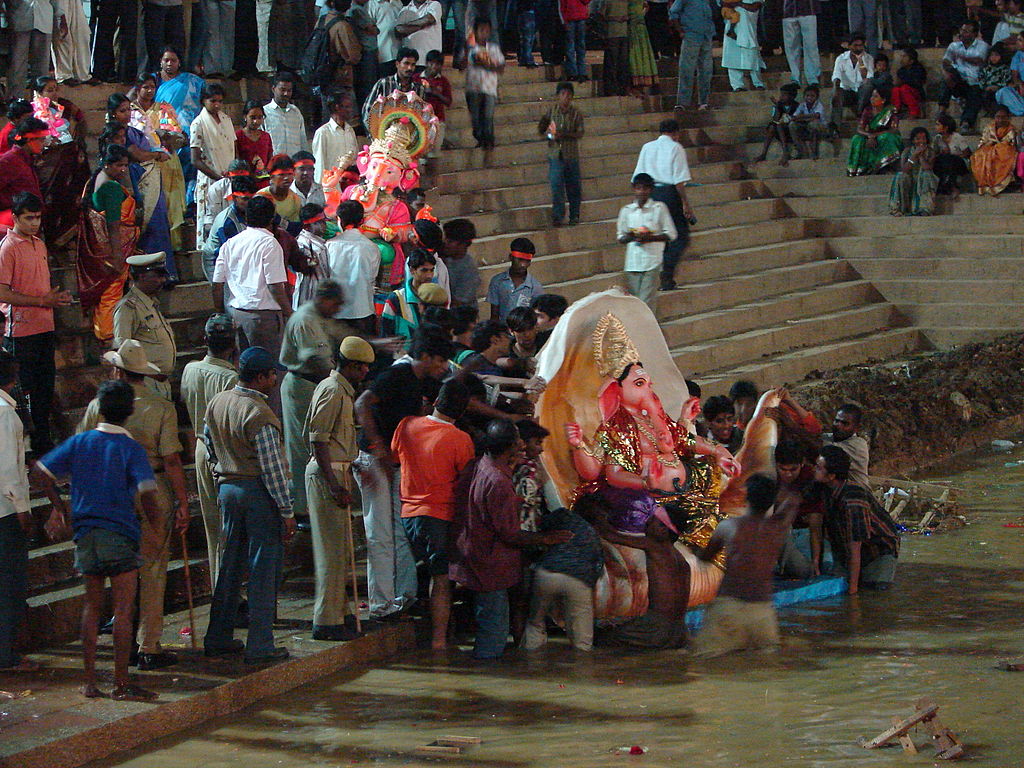
Ganesh is apparently the most beloved god among all Hindu gods. Hindu believers usually appeal him in their prayers. Ganesha, Vinâyaka (the best guide), Ganapati (Ganas’s chief) or Pillayar are His other names. He is the god of wisdom, intelligence, prudence and education. These attributions make him the patron saint of workers and students.
In accordance with Hindu mythology, Ganesh is the son of Shiva and Pârvatî. His animal appearance comes from many myths. The most famous and accepted among all myths is as follows: Shiva, Pârvatî’s husband, left his wife to go to war. Anguished by loneliness, the goddess shaped and moulded a son from dust and foam of her bath. After many years of war, Shiva came back home and found a new man in his former house. Furious because of Ganesh who didn’t allow him to get in, he cut the head of the young handsome man. His head couldn’t be found after that. Pârvatî desperately told the whole story and required him to give back her son. Shiva promised her to replace her son’s head with the first child’s one, which was a baby elephant.
This episode gives the whole meaning of the god of wisdom and intelligence. Indeed, according to Hindus, intellect (shaki) must leave the head to access to divinity. Thus, we understand more the child’s decapitation.
Idols or mûrtis traditionally represent a fat red child’s body with four arms, an elephant’s head and only one tusk. Another myth tells Ganesh brake the other tusk one night from falling out of his vâhana, a divin mean of transport (a rat). The Moon, witness of the scene, made fun of him and upset Ganesh. To revenge, he through to her the broken tusk and made her biggest crater. Since this, it is strongly advises against watching the moon while Ganesh Chaturthi.
His aura spread through India and Asia. Japanese Buddhism sees in Ganesh a reincarnation of Shō Kannon Bosatsu, the Grand Being of compassion. In Indonesia, he is the symbol of the prestigious university Bandung Institute of Technology (the best engineering university of the country).
This festival raises unfortunately some ecological issues. Traditionally, clay was used to make Ganesh idols. Over the years, idols’ production has become a business and plaster of Paris (POP), which is lighter and cheaper, has become the favoured material to mould these idols. POP contains toxic chemicals such as sulphur, phosphorus or magnesium. The dyes used to colour it contain mercury and are also very contaminant and harmful, and contributed to rise acidity level of rivers. It is not unusual to see dead fishes shoals floating on the water the days after the festival.
NGOs such as To Make A Difference tries to solve this problem by promoting a “Ganesh Chaturthi Eco Friendly”. The NGO sells cheap eco friendly idols of the god. The website give a good glimpse of its actions and the advice to preserve the environment.
http://www.tmad.org/index.php?option=com_content&view=article&id=112&Itemid=62


 Français
Français